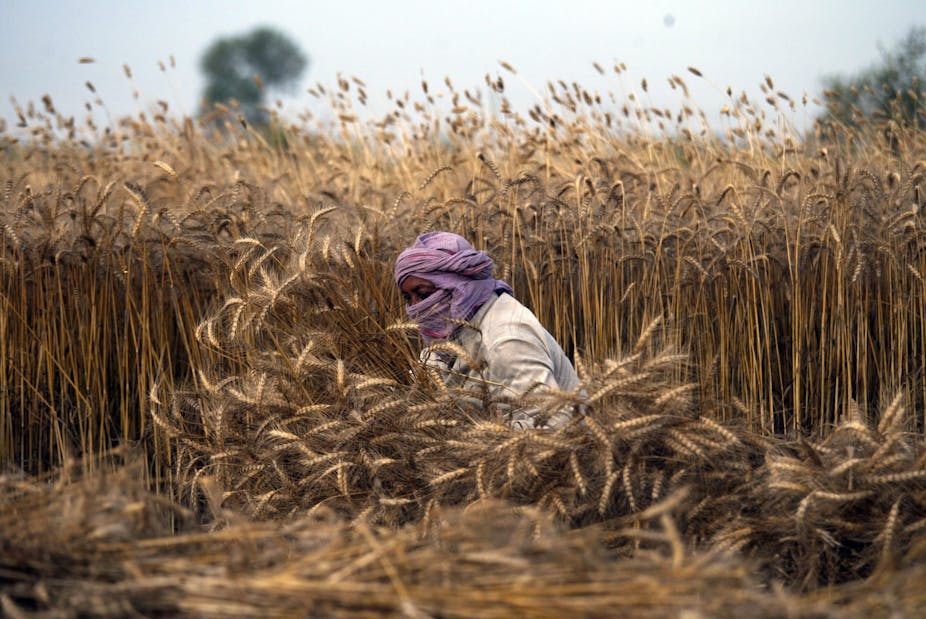In recent weeks Australia’s PM, a shadow minister, and a state premier have heralded the opportunities for Australian farmers to capitalise on a global food-shortage and, in particular, rising demand for high quality food amongst the middle classes in Asia. It seems Australia is in the perfect position to do well and to do good. Closer examination suggests that many of the assumptions underlying these pervasive beliefs are problematic. I don’t think Australians can simply wait for the rising tide of Asian demand to improve the incomes and livelihoods of Australia’s farmers. If there are opportunities, they will have to be identified and pursued in a highly competitive environment.
Food production rises with good governance
Let’s examine some of the underlying assumptions. Is there really a global food crisis? There are hungry people and this is a tragedy that should not be trivialised. At the same time, most of the world’s population does get sufficient food each day. As the UN Special Rapporteur on Food recently acknowledged, hunger in the 21st Century is largely the outcome of poor governance and the influence of developed economies on food production in developing nations. Think fish and cat food. Just as arguments can be advanced suggesting there will be a future food crisis, counter arguments can be put forward suggesting that we will continue to muddle through. New farmland is being developed in South America, rising global temperatures should increase the area of arable land in north America and northern Europe and improved governance in Africa is leading to increased food production there.
Australia not suited to capture rising world demand
A key point is that Australia is unlikely to make a substantial contribution to solving world hunger. We simply don’t produce that much food, and poor people cannot afford our farm products. We have plenty of food and export about half of what we produce, but that is a tiny fraction of the global food supply - of which we supply about 1%. Australian farmers are efficient in terms of the food and fibre produced per unit of labour input, but most of our farming systems are based on high inputs of expensive fuel, fertiliser, chemicals, and machinery. With very high wage costs and a high Aussie dollar, it is increasingly difficult for Australia to hold existing markets.
What about the opportunities for Australia to export into Asia? Firstly, we need to recognize that there is capacity to increase food production in Asia. Farm incomes in Asia are typically too low to keep most farmers producing food. As farmers move to cities in search of higher paid work, and that typically is only around $2-$3 per day, large areas of land have become less productive. Indeed, in parts of India, minimum prices are set at local markets to encourage farmers to grow food.
To the extent that markets emerge or are developed, Australian exporters can expect intense competition from lower cost, larger scale producers in South America, Africa and even, North America. Chile and South Africa, for example, are also southern hemisphere producers able to meet out-of-season food demand in Asia.
Time for a realistic reappraisal
Most middle class Indians I’ve met almost exclusively eat Indian foods, often purchased directly from local suppliers, which they or hired help prepare. Even middle class Asians are not as wealthy as we might believe. Indian professionals receive about 10% of the income of comparable Australians. And as economists explain, as incomes rise, people typically spend a smaller proportion of their income on food. In India, increased incomes are more likely to be spent on motorbikes, phones, computers, education, and housing than on food. There is already a substantial cohort of wealthy consumers in Asia, but no real evidence of increased demand and prices for Australian farm products. The one exception is possibly lamb, and the story there is of marketing to cultures that prefer lamb.
So, both price and cultural preferences will be crucial factors influencing demand for food in Asia and for Australian products. The mining analogy is flawed: Australia is typically a low-cost producer of coal and iron ore; it is much easier to increase the supply of farm products as demand rises; and there is increasing demand for the consumer products and urban lifestyles that rely on mining outputs. There will be opportunities for Australians to export to Asian markets, but success cannot be assumed. Farmers will need to keep their costs down, but government and industry need to act rather than simply telling farmers that the future is rosy and they have the same opportunities as the miners.
Comments welcome below.

